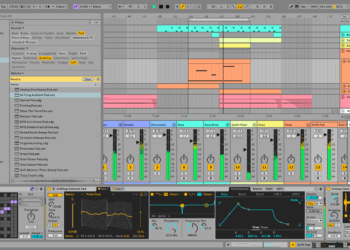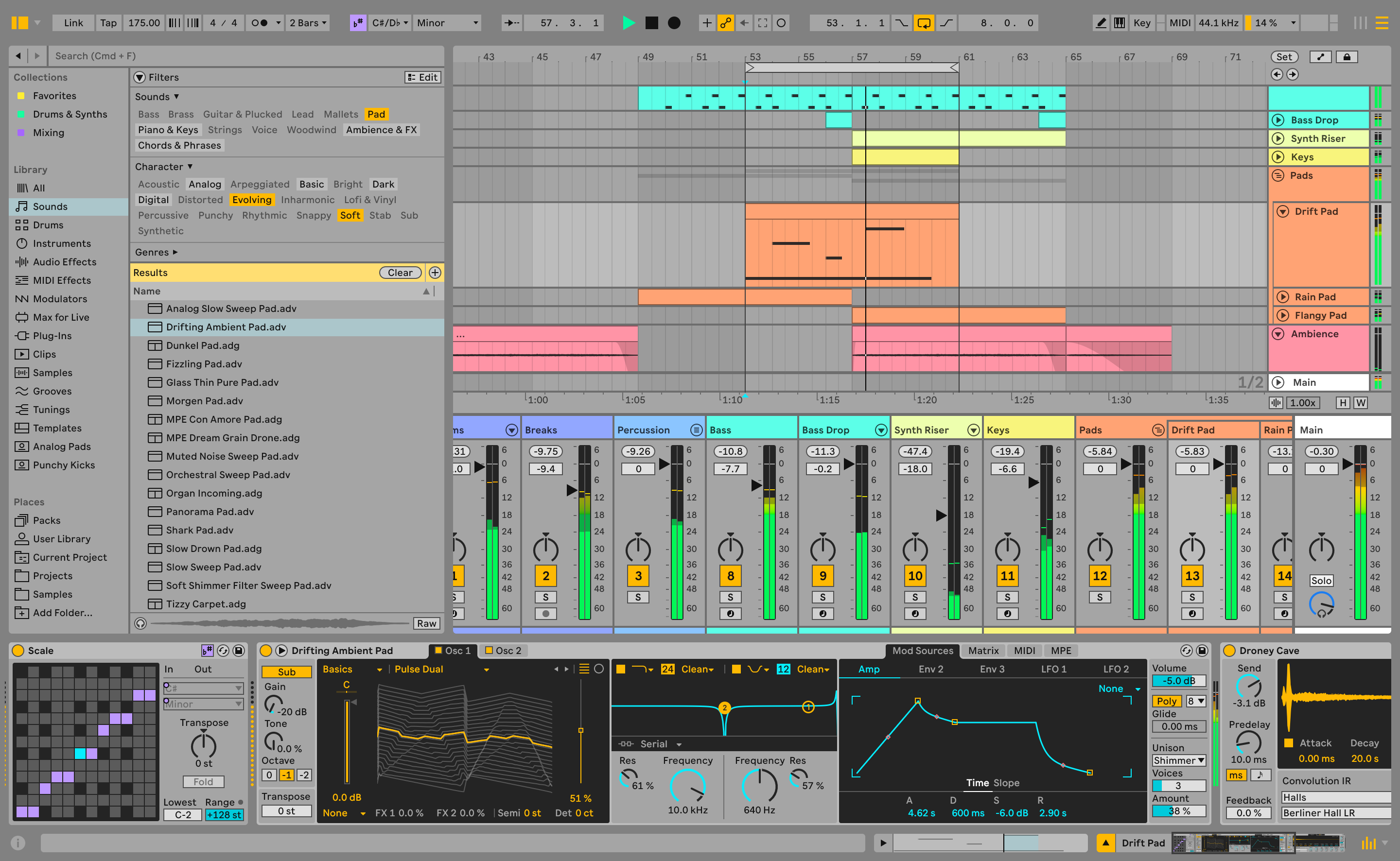DJ Rob Ticho
Chances are high you have probably tried out both Ableton Live and Traktor only to discover that each program has different strengths and weaknesses. While I primarily use Traktor for DJing, there are aspects of Ableton, such as playing midi instruments live, which I’ve always wanted to incorporate into my sets. In hopes to have the best of both worlds, I spent some time and money figuring out a simple to connect the two programs on 2 laptops. Now I would like to share that knowledge with Dj TechTools so others can try out that great combo as well.

This tutorial will cover the steps required to run each program on a separate laptop and mix them together on a standard audio DJ mixer. Dj TT published a comprehensive tutorial on how to do the same thing with only one laptop, but it involves some complex routing and a lot of software. This approach is a simple way to sync up 2 laptops using basic hardware and no additional software. You could also use this method to sync up 2 djs on separate laptops using Traktor or Ableton.
Before you go any further I need to mention the hardware required for this process.
- Two laptops- One for Ableton, one for Traktor (Mine are cheap PCs but work great.)
- 3 channel audio mixer (I’m using 3 channels on the Behringer DJX 700)
- 2 Channel sound Card for Traktor( Like the Hercules MKII DJ console or Audio 4)
- Midi Controller for Traktor ( Like the M-Audio Oxygen 8 v2)
- Y cable (Running Ableton from the Headphone out to the mixer)
- Any audio Interface with Midi IN and OUT (For example the M-Audio Midisport Uno)
- Optional: Controller for Ableton (Akai MPK 49 midi controller)
Sending MIDI from Traktor
I decided it would be best for Traktor to be the master tempo program as my tracks there are more likely to vary in BPM. This means that Traktor will control the BPM of Ableton in order to keep all the music in sync. You can also set up Traktor to work as the slave machine if you would like.

- Go to the preferences window and then midi config(Figure 1)
- Select a midi interface with midi out (I used the Oxygen 8)
- Below that select “Send to MIDI clock”
(Take a note of the MIDI Clock Setting Offset as you might need to adjust this for perfect timing between the two programs.)
Figure2

- close the config panel and click on the metronome in the upper left hand corner of the screen. (Picture above)
- You can set the clock to Auto (Traktor will send out the tempo of the master deck to Ableton)
- Alternately, Set the clock to internal and manually set the tempo that Traktor will send.
- Click on the Play/Pause Icon to start sending clock
- Click on sync while in the performance to re-trigger the downbeat
Bridging the gap
Now that there is a MIDI clock running from Traktor out of the Oxygen controller, we needed to get it into the second laptop. This is where the M-Audio Midisport Uno comes in. We will connect that audio interface to the Ableton computer and run a single midi cable OUT of the Oxygen 8 and into the Uno.
Setting up Ableton
Now that MIDI is running into the second computer go ahead and open Ableton and get the MIDI sync.\
- Go to Options and then preferences
- Select the Midi input of your midi interface
- Check track and snyc options. (Figure 3)
Figure 3

In the upper left hand part of the Ableton screen you will see a yellow box reading EXT. (Figure 4) There will be a yellow square that blinks in time with the MIDI signal. I also should note that when the EXT is yellow, Ableton is waiting for Traktor to tell it to play. This is done by pressing the midi clock sync button in traktor (Highlighted in Figure 2).
Figure 4

Step Four Perfecting the sync
Now that Traktor is driving the BPM of Ableton, it’s time to make the final tweaks to get them perfectly in sync. It’s not uncommon that the sync will be slightly off due to all the latency between the systems and various controllers.
After much tweaking, I found that the best way to sync the two is to play both of the metronomes. For this use the “Tick” button in Traktor (figure 2). In Ableton, click the metronome button which is in the last button in the upper left hand menu near the EXT button (Figure 4).
It’s possible to adjust the MIDI offset in Traktor, however, I’ve found that adjusting the track delay in Ableton gives you more control. To display the track delay go to View and then check Track Delay. Then adjust the overall track delay which is found under the master channel. (Figure 4) A setting of 3 seconds worked for me.
Rock out
That’s it, you should be ready to blare tunes and mix between the systems. One last piece of advice, sometimes you may need to resend the MIDI sync from Traktor if your timing changes. When you do that, Ableton might bork out for a second. I’ve compensated for this by making sure that Ableton is not playing during the re-sync process.









